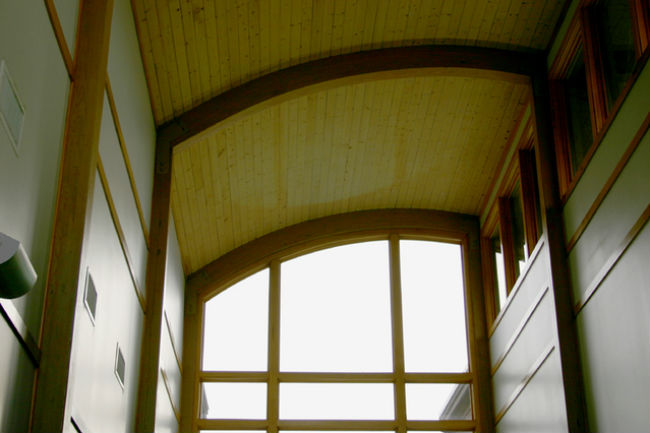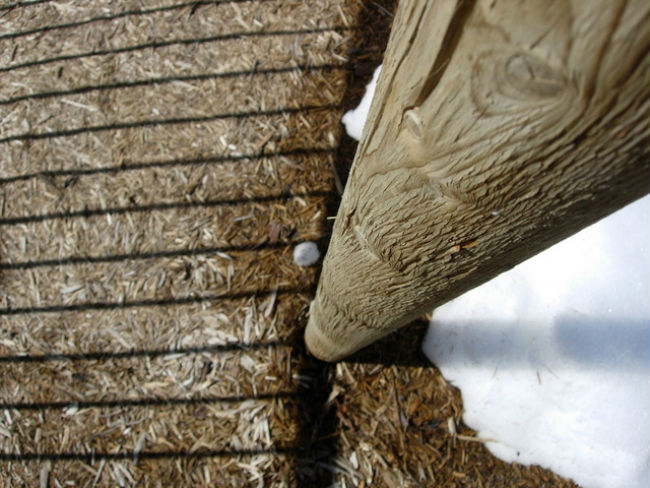Active infestations of drywood termites in your garden and at home are a current affair of the Australian, Indian, US homeowners. Colonies of drywood termites are not numerous and, in fact, they are smaller to compare with subterraneans’. They forage only inside the infested structure. Due to their limited location area, the great variety of methods for spot treatment indoors and outdoors are available. The homeowners can apply chemical and natural ways to get rid of drywoods. DIY Termidor for drywood termites can be performed with the application of non-repellent fipronil Basf products, which come in three formulations (aerosol sprays, liquid concentrates (SCs), foams).
For local treatment in the form of in-wall injections directly to termite infestations, the foam is better in application than spray or liquid, as it does not flow down, but evenly distributes and stays inside the wall voids and cavities. Foam formulation allows the fipronil toxin make its way into the cracks in the wood and kill wood pests effectively. Diy Termidor for drywood termites’ treatment is labor- and time-consuming, though it is worth the effort.

In this article we introduce you the way of drywood termites’ eradication by yourself with Basf Termidor products. If you have questions, connected with spot treatment diy, don’t be afraid of asking in order to sift them to the bottom and choose a product, which fits your needs and demands perfectly. It is recommended the homeowners to call a professional pest control service that specializes in termite extermination to perform the treatment for them.
Localized interior or exterior diy Termidor for drywood termites treatment
The interior localized method is used directly to the chambers, nest and galleries in the walls, wood structure, frames, any other wooden items, which are indoors; and in the elements of bridges, sidding, exterior walls, decks, porches, fencing, which are outdoors. If you can detect the location of the nesting area, you can treat an active infestation with Termidor SC, Termidor Foam and Termidor Dry on your own.
Indoor fipronil Termidor for drywood termites’ diy treatment
DIY Termidor for drywood termites’ treatment inside your home can require the following steps:
- Inspect the walls and structures to figure out where termites are coming from and to identify their species.
- Put on protective gloves and clothes, wear goggles and respirator or face mask, where ventilation is poor. Take your children and pets away from the fipronil treated area.
- Locate the gallery, nest chamber or galleries.
- If possible, remove the drywall in the infested zone and drill a hole or holes, if it is necessary to get access to the area where you detect termites’ damage or suspect a drywood termites’ activity.
- Or drill directly into the wall or sheetrock. Openings should be 24 inches. When you drill into the drywall, it is required to start drilling about 18 inches up from the floor level and in between each stud around the termite infested area. When you drill directly into wood and structure, you should drill a bit smaller holes (18 inches) in a staggered manner every 3-4 inches in order to detect an area where the drill bit does not meet resistance. It means that you found the location of the termite gallery and the Termidor spray, foam or dust is to be applied in this zone.
- Apply a non-repellent Termidor product through the holes or directly into the nest and galleries. Remember to read the entire product label for complete instructions:
Termidor Foam (drywood termites pass by the foam and pick up the 0.005% toxin on their bodies and transfer it to other colony-mates)
Shake well before using. Hold the injector tip in place for 6-10 seconds to allow the product within the injector tube to dispense into the treated nest, gallery, shelter-tube.
Termidor Dry (drywood termites are exterminated directly during the application. After the treatment, residues of the termidor dust continue to control. Termites travel through the powder, the 0.5% fipronil sticks on their legs and bodies. It results in fast spreading of the toxin to the other colony-members)
For drywood termite infestations, it is necessary to apply 0.1 – 1 g per an injection point in wood. Note that 3 ball compressions of the applicator delivers 0.1 g of Termidor powder.
Termidor SC (drywood termites make their way through the treated zones with the 0.06%, 0.09% and 0.125% Termidor SC spray solutions, the poison sticks on their antennae, legs and bodies and is fast transfered to the other zooids)
Unfortunately, the producer restricts the application of Termidor SC and it can be used only by licensed technicians familiar with trenching technique, rodding and subslab injection, foam delivery method. If you follow the instructions in the product label, you can dilute concentrate with water (Table of Termidor SC dilution) and use the prepared solution only for in-structure injections.
7. Deliver also Termidor termicide formulation to areas around pipes, insulation and obstructions, along cracks and crevices.
8. Reinspect in 2-4 weeks after the application of diy Termidor for drywood termites.
9. If you still detect living termites and infestations are astill active, re-application is possible (in a month after the previous treatment).
Outdoor Termidor for drywood termites’ treatment diy
Outdoor applications must be limited to small spot treatments only. They are not suitable for ground treatment as drywood termites do not live in the soil.

DIY Termidor for drywood termites’ treatment outdoors is performed according to the following steps:
- Inspect the exterior walls, siding, fence, and other structures in your yard or garden to figure out where termites are coming from and to identify their type.
- Put on protective gloves and clothes, closed toe shoes, wear goggles. Take your children and pets away from the fipronil treated area.
- Locate the galleries, chambers and nest area.
- If possible, remove the drywall in the infested zone and drill a hole or holes, if it is necessary to get access to the area where you detect or suspect a drywood termites’ activity. Or drill directly into the exterior wooden elements, stups, slabs, utility poles, walls and landscape timbers. It may be necessary to drill multiple holes around the circumference of the stump or utility pole. When you treat below slabs, drill holes through the slab itself where termites are active and inject Termidor spray, Termidor dry or Termidor foam into the void. For fences, treat exposed surfaces with Termidor Foam and Termidor SC or drill wooden members and inject. When you drill directly into exterior wall, wood and structure, you should drill a bit smaller holes (18 inches) in a staggered manner every 3-4 inches in order to detect an area where the drill bit does not meet resistance. It means that you found the location of the termite gallery and the Termidor spray, foam or dust is to be applied in this zone.
- Apply a non-repellent Termidor product through the holes or directly into the nest and galleries. Remember to read the entire product label for complete instructions: Termidor Foam, Termidor Dry, Termidor SC
| Fipronil Product | Dilution and Dosage | Application | Rate |
|---|---|---|---|
| TERMIDOR SC 9.1% fipronil | 0.06% (1 gallon of water + 0.8 fl.oz Termidor SC) 0.09% (1 gallon of water + 1.2 fl.oz Termidor SC) 0.125% (1 gallon of water + 1.6 fl.oz Termidor SC) | 0.06% - for suspected infestations 0.09% and 0.125% - for severe, active infestations | Horizontal treated area: 1 - 1 1/2 gal per 10 sq. ft Vertical treated area: 4 gal per 10 linear ft |
| TERMIDOR FOAM 0.005% fipronil | expansion ratio - 30:1 1 oz of product produce 1 qt of foam for 5 sec | 0.005% - for control and spot treatment of termite nests and galleries in the wood cavities and wall voids | Inject into each hole, which is drilled in a staggered manner every 3-4 or 6-8 inches, approx. for 5-10 seconds. |
| TERMIDOR DRY 0.5% fipronil | 3 bulb/ ball compressions of the application device delivers 0.1 g of dust | 0.5% - for control and localized treatment of subterranean and drywood termites | For subterranean termite galleries and shelter mud-tubes use 0.1 - 1 g per an injection point. For carton nests apply 0.3 - 3 g per an injection point. For voids use 0.2 - 2 g per an injection point. For drywood termite infestations, it is necessary to apply 0.1 - 1 g per an injection point in wood. |
- Deliver also Termidor foam formulation along cracks and crevices. Note that termicide foam must dissipate or be removed prior to leaving area.
- Reinspect in 2-4 weeks after the application of diy Termidor for drywood termites.
- If you detect living termites and infestations are still active, re-treatment is possible (in 4 weeks after the previous treatment).
The customers, who bought and applied Termidor against localized infestations of the drywood termites in the walls, frames and other constructions, evaluated its effectiveness. First, they found insects’ activity after the infestation being foamed or sprayed, then, four-six days later, termites looked ill, weak and sleepy. At last, their activity reduced greatly and the drywood pests disappeared completely for about six weeks.
I used this stuff to fight drywood termites inside the walls in my house in South California. I amazed Termidor works extremely well. It was exactly what I needed! After the first in-wall spot treatment, no more termite droppings of hexagonal shape showed up again from the kickouts.
I like this stuff pretty well and I can say so as tried lots of termicides and generic traps (they did not help me solve my pest problem). Termidor really killed drywoods.
I followed the instructions and operated myself, it’s easy: dilute, drill and inject.Timbor’s not cheap, though cheaper than tent a home for fumigation.
hello did you say you used termidor sc or timbor inside you southern cali home? did you add it to a foaming agent or spray inside wall voids. can you please explain in more detail. i care for a house just across the border san diego/mex border, on the beach, drywood termites!!! old all wooden house of my fathers to care for. no way to tent. just want to know how u did exacty please. t thank you and how long did it last